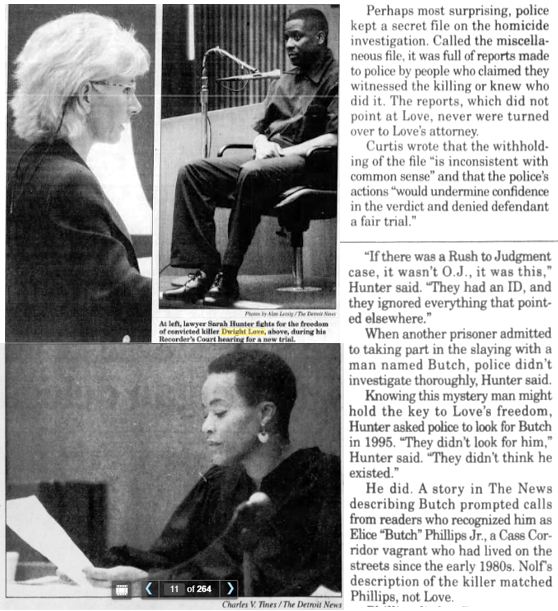
Top: Atty. Sarah Hunter (l) represents Dwight Love (center)in 1996; excerpts from Detroit News article by Ron French (r) citing miscellaneous files; bottom (l) Judge Daphne Means Curtis
In 1996, Atty. Sarah Hunter exposed DPD’s use of “miscellaneous files” to hide exculpatory evidence
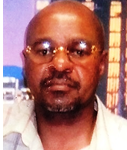
Ricardo Ferrell
In 2022, precedent brings new hope for Roger Carlos Ray, in prison since 1993–hearing on suppressed 1987 DPD files set for July 7, 2022
Court of Appeals vacated conviction and ordered a new trial in 2020
By Ricardo Ferrell, Field Editor
With Diane Bukowski, VOD Editor
DONATE TO VOD at https://www.gofundme.com/donate-to-vod
 Ed. note: the names of the prosecution’s chief witness against Roger Carlos Ray, who may be the actual murderer, and the new witness whose affidavit says that man confessed the crime to him, have been redacted here since judicial action on the case is still pending.
Ed. note: the names of the prosecution’s chief witness against Roger Carlos Ray, who may be the actual murderer, and the new witness whose affidavit says that man confessed the crime to him, have been redacted here since judicial action on the case is still pending.
May 2, 2022
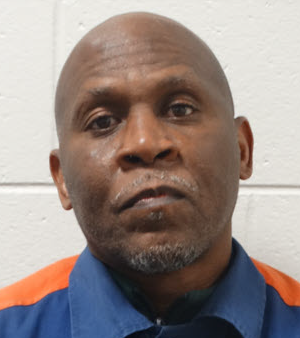
Roger Carlos Ray MDOC
Through nearly three decades in prison, Roger Carlos Ray, 57, has always maintained his innocence of the gruesome murder of John Holmes on Detroit’s west-side in 1987.
Now he may finally have a chance for freedom, thanks to an investigation by private investigator Scott Lewis in 2018, which points to the chief trial witness against Ray as the likely murderer.
Based on that evidence, the Michigan Court of Appeals vacated Ray’s conviction July 23, 2020 and ordered a new trial.
An evidentiary hearing on a “Successive Motion for Relief from Judgment based on Newly Discovered Evidence in the Detroit Police Department ‘Homicide File'” is set for July 7 in front of Wayne 3rd Circuit Court Judge Miriam Saad Bazzi. Atty. Laurel Kelly Young of Grand Rapids is representing Ray.
THE CASE OF DWIGHT LOVE AND THE ‘MISCELLANEOUS’ FILES

DPD Commander Gerald Stewart (l) helps Rosa Parks at her house after she was attacked inside in Aug. 1994. Atty. Gregory Reed (r).
In 1996, Dwight Carvel Love and his attorney Sarah Hunter first exposed DPD’s long-standing practice of using “miscellaneous files” separate from the official homicide file to hide exculpatory (favorable) evidence from the defense.
Recorders Court Judge Daphne Means Curtis ordered those files in Love’s case released, and he and his attorney found exculpatory and impeachment evidence in them favorable to Love. Judge Curtis dismissed the case, and after several years of appeals by the prosecutor’s office, finally freed Love.
In an affidavit in 1999, Hunter swore she met secretly with a former FBI agent and a DPD officer who was on leave, who reported corrupt practices in the department. Later, the officer allegedly killed himself and his wife, and the former FBI agent died as well, leaving Hunter the only witness to the meeting left alive. In the excerpt below, “Mr. Harrison” is the DPD officer, and “Mr. Robertson” is the former FBI agent. Link to full affidavit is below excerpt.
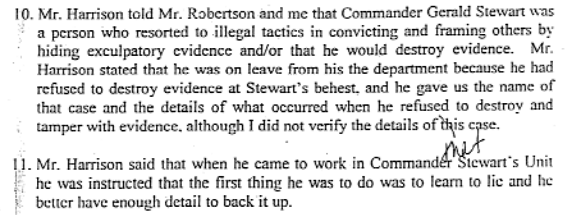
http://voiceofdetroit.net/wp-content/uploads/Sarah.Hunter.Affidavit-Dwight-Love-case.pdf
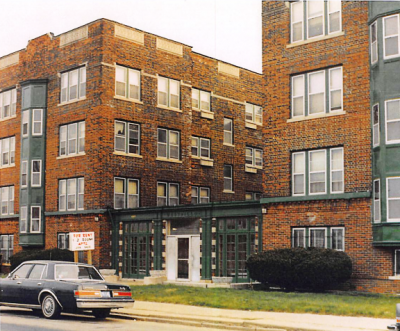
Westville Apartments at 6017 Grand River (photo DPD homicide file-1987). Building is no longer there.
Dwight Love was arrested and convicted in 1981 for a murder near Holden and Trumbull. The John Holmes killing happened six years later, in 1987 at 6017 Grand River, a 1.3 mile walk from the first scene.
DPD Commander Gerald Stewart, referenced in Hunter’s post above, headed the Department’s city-wide Major Crimes Unit through those years.
John Holmes was the building manager of the Westville Apartments at 6017 Grand River for several years. Tenants told Detroit Police he was a loan shark and carried large amounts of money as well as a gun. One tenant alleged that he also dealt drugs. Police discovered his badly burned body in the building’s incinerator room in the basement on , 1987. They reported he had been beaten and shot in the back of his head.
Through the Michigan Freedom of Information Act, Private Investigator Scott Lewis obtained the homicide file for the victim, John Holmes (87-203), including the Detroit Police Homicide Section miscellaneous file.
Lewis told VOD that the City normally sends both as part of the same PDF file. During VOD’s review of that combined file, the sequence of records from 1987 to 1993 randomly skipped back and forth between the two years, with one arrest record date of 1993 crossed out in pen and changed to 1987. Lewis sent the record to Ray, who identified records from 1987 that had not been produced at his trial.

Private investigator, former TV reporter Scott Lewis
The prosecution’s entire case against Ray for the murder of Holmes hinged on what the chief prosecution witness told homicide investigators in three separate conflicting statements. The first did not implicate Ray.
The last two statements, the only ones read to the jury, claimed the witness saw Ray in bloodied clothing after the crime, and that Ray and another (unidentified) man ordered the witness under gunpoint to carry Holmes’ safe to a dumpster behind the building, and clean up the scene, including the apartment where the murder took place, the apartment rented by witness #1. Ray had been staying there, with witness #1 and his girlfriend.
There was no weapon or bullet evidence tying Ray to the murder, although a DPD report shows that one bullet and another fragment were extracted from Holmes’ head.
The homicide file included handwritten police notes from the 1987 record: 1) A Michigan identification card for the prosecution’s chief witness, found wedged between the coach cushions in Holmes’ living room. That witness claimed he had not been in Holmes’ apartment for several months, and testified at trial that Roger Carlos Ray was the killer, and 2) A note about new Witness #2: called the DPD to report an incriminating confession from Witness #1. Police never followed up on it.

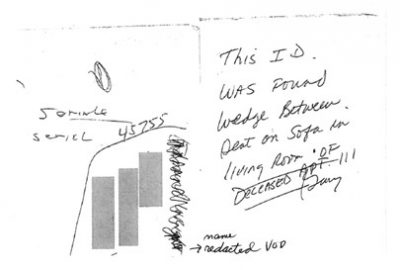
DPD Note by Sgt. Bobby Gary, from homicide file, shows ID of witness #1
Investigator Scott Lewis contacted new witness #2 and obtained his affidavit on April 6, 2018. He states that witness #1 told him that the deceased, John Holmes, had money in his safe and that he had to get the money out of the safe and had to get rid of Holmes to get the money.
Subsequently, witness #1 showed him a stack of money and two .357 handguns and asked witness him to get rid of the handguns. Witness #2 called the Detroit Police Dept. and told them his name and that he had information about the murder of Holmes, but was placed on indefinite hold. He never got back to police.
The file also shows police obtained the names of five tenants who had been evicted in the month prior to Holmes’ murder, but no follow-up is indicated.
Police investigators originally focused on Witness #1 as the suspect, although Ray’s jury never knew this. Progress notes from the investigator explicitly identify witness #1 as the suspect. Just days after the homicide, detectives were trying to reach him at work but could not find him because he had stopped going to work and left without getting his paycheck.
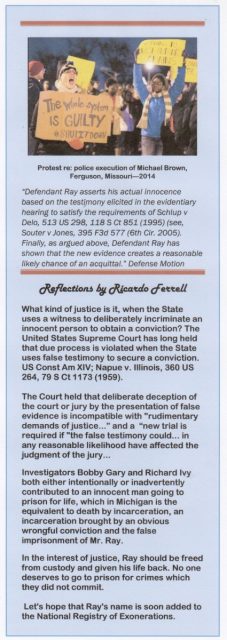 Police referred him and his girlfriend, listed as a witness, who was with him when he saw Ray in bloodied clothing, for polygraph exams twice, but each time the two failed to show up after first stating they would be there.
Police referred him and his girlfriend, listed as a witness, who was with him when he saw Ray in bloodied clothing, for polygraph exams twice, but each time the two failed to show up after first stating they would be there.
Records show that the safe was taken into evidence under tag #ET407736 and referred for fingerprinting, but there is no record of referrals for a blowtorch and a cigarette filter found with the body. A lab report on the fingerprints on the safe shows they were not identifiable.
Ray was not arrested and charged in the crime until 1993, six years after the murder.
FBI agent Stu Carlisle, part of a Repeat Offenders multi-agency task force, said a “confidential informant” told him where Ray was, and six officers went to the location to carry out the arrest. The DPD detectives in charge of Ray’s case in both 1987 and 1993 were Bobby Gary and Richard Ivy.
According to court records, Ray was tried by a jury in front of Detroit Recorder’s Court Judge Craig Strong. He was convicted of Homicide-Felony Murder and Crime with a Weapon on November 12, 1993 and sentenced to life without parole by Strong. Over the years, Strong denied four of Ray’s motions for relief from judgment, but this time the Court of Appeals overturned his findings and ordered a new trial.
################################################################################################################
 VOD’s staff lives either on limited fixed incomes or is incarcerated. We are not paid; we publish the newspaper pro bono. Help keep us afloat by chipping in so stories on this Prison Nation and Police State, and related matters, can keep coming! Any amount is appreciated.
VOD’s staff lives either on limited fixed incomes or is incarcerated. We are not paid; we publish the newspaper pro bono. Help keep us afloat by chipping in so stories on this Prison Nation and Police State, and related matters, can keep coming! Any amount is appreciated.
DONATE TO VOD
https://www.gofundme.com/donate-to-vod
(Contact editor for details on other ways to send funds, at 313-825-6126 or diane_bukowski@hotmail.com.)
################################################################################################################




